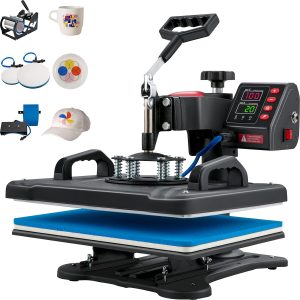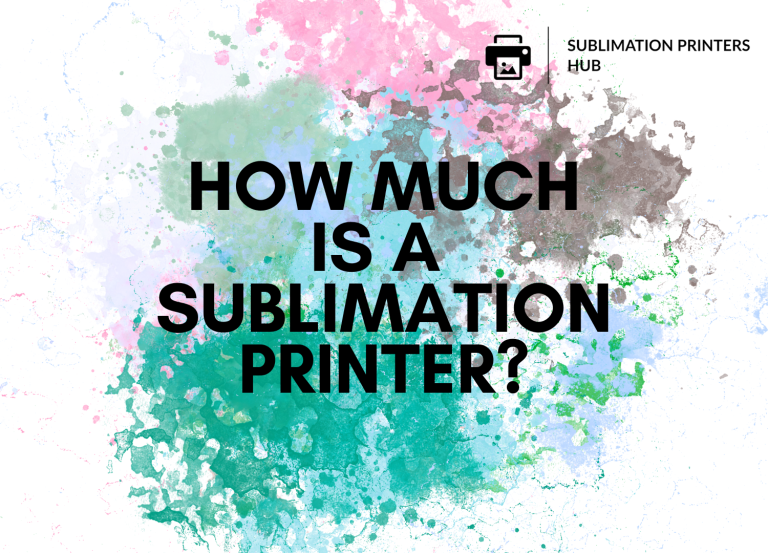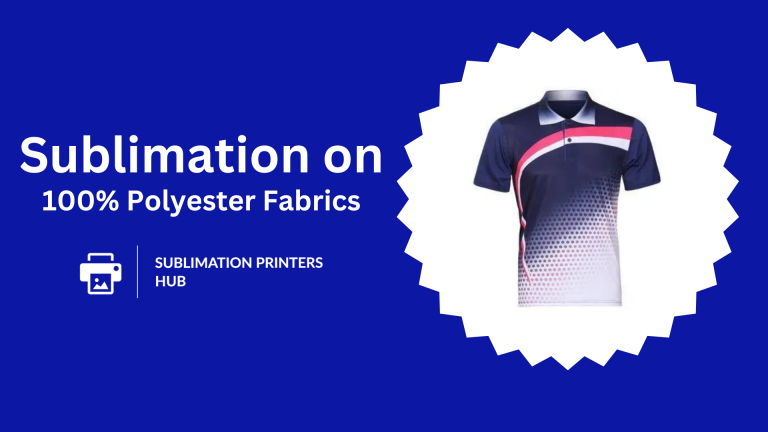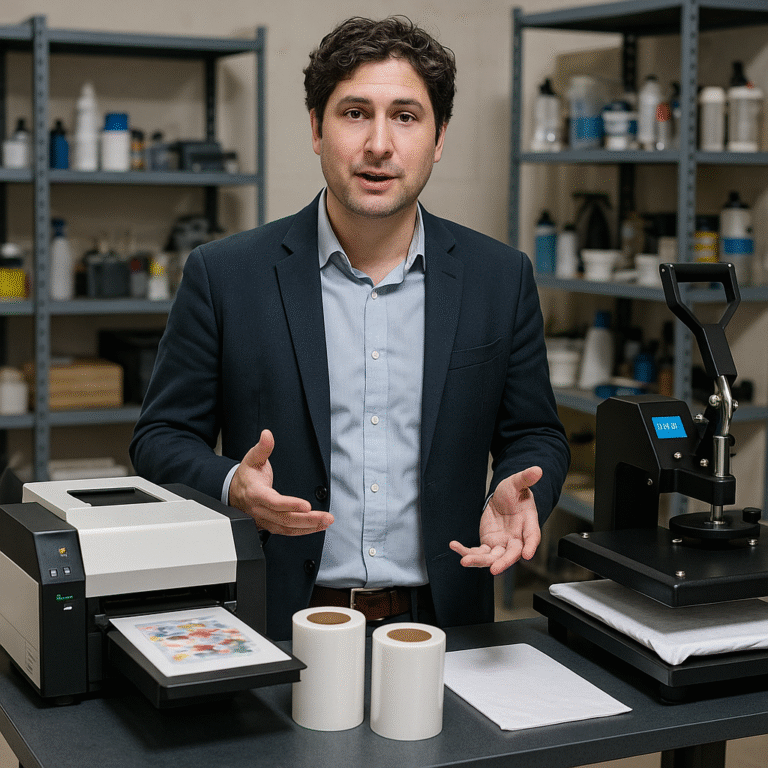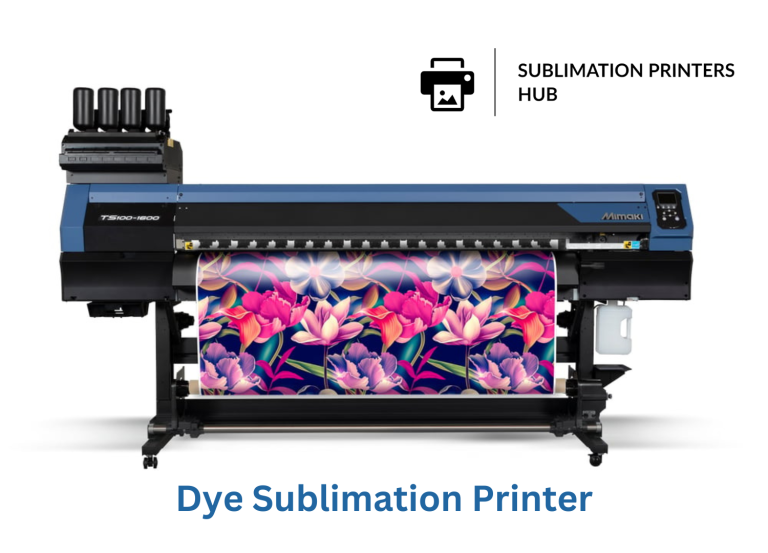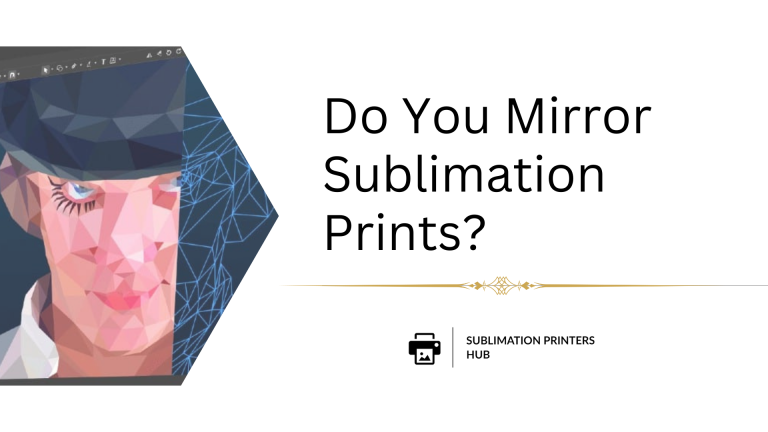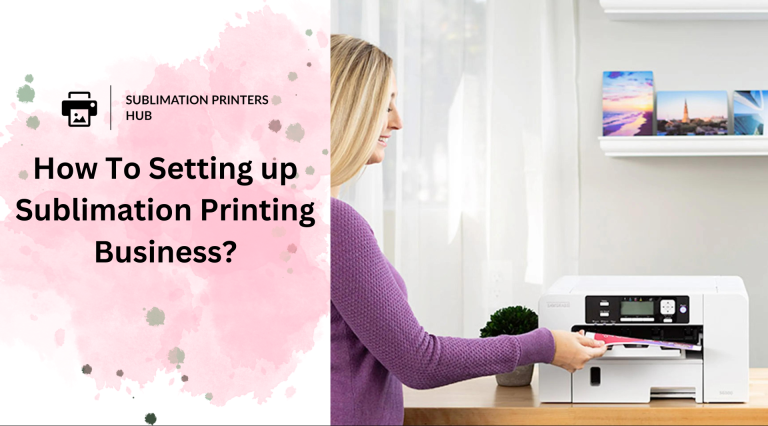Sublimation printing is the method of printing designs onto special polyester-coated substrates. The printed ink transforms into a gas and infuses into the substrate, yielding permanent prints that will not peel or fade. Sublimation printing necessitates the use of specialised inks, printers, and substrates, but it allows you to produce personalized, full-color prints on a variety of products such as mugs, clothes, phone covers, tiles, and more. Learning how to use a sublimation printer correctly will help you to maximize the benefits of this versatile printing technology.
Video of How To Use Sublimation Printer: Beginners Guide
Sublimation printing, also known as dye-sublimation, is a digital printing technique that employs heat to infuse printer ink into specially coated surfaces.
It differs from typical printing technologies in a few important ways:
⇒ Needs specialised printer and inks: Sublimation printers use special heating components to vaporize ink. The printers use dye-sublimation inks, which at high temperatures convert into a gas. Standard inkjet printers and inks will not work.
⇒ Ink converts into a gas: When heated, sublimation inks transform into a gas, allowing the ink to fully penetrate the substrate’s polymer layer. This produces permanent prints that will not crack, fade, or peel.
⇒ Only works on covered surfaces: Substrates (surfaces) utilized in sublimation printing have a polymer covering designed to accept gaseous ink. Polyester and ceramic are common coatings. Uncoated materials, such as paper or cotton, cannot be used.
Sublimation printing produces full-color photographic prints that genuinely become part of the substrate. It’s great for printing high-quality images on mugs, shirts, phone covers, aluminium sheets, and other items.
What You Need To Get Started
A complete sublimation printing system requires a few basic components.
1) Sublimation Printer
You’ll need a competent sublimation printer that can handle high heat. Consumer inkjet printers are unsuitable for sublimation. (if you have an Epson inkjet printer then you can convert it to sublimation printer) Check for the following features:
– Dye-sublimation ink support
– High temperature printheads
– Adjustable heating elements
– The ability to print on coated sublimation surfaces.
Popular sublimation printer models include the Epson SureColor F-Series, Ricoh Ri 100/1000, and Sawgrass Virtuoso. Printer prices range from $300 to $3,000 or more.
Check Best Sublimation Printer From Amazon
2) Sublimation Ink
Sublimation printers require specialised dye-sublimation inks, which transform to gas when heated. The ink is offered in either individual cartridges or bulk ink systems. Each colour of ink (CMYK) must be formulated for sublimation. Never use standard inkjet ink in a sublimation printer.
3) Heat Press (optional)
You will require a heat press to apply sublimated prints to substrates such as shirts, mugs, and tiles. The heat press uses high temperatures and pressure to adhere the print to the surface. Small clamshell-style presses cost $200-$500.
4) Polyester-Coated Substrates
You can only sublimate onto surfaces with a polyester polymer covering that is designed to accept gaseous dyes. Polyester cloth and ceramic tiles are two often used substrates. You can also discover specialist items such as metal and wood sheets with poly coatings.
How To Use A Sublimation Printer?
Once you have the appropriate ingredients, follow the instructions below to sublimate prints.
1) Prepare The Print File:
→ Create your image in a graphics programme using the dimensions required for the final result.
→ Save the file as a high-quality format such as PNG, TIFF, or BMP. JPGs may result in quality loss.
→ Poor print quality will result if the resolution and dimensions are too tiny. Use at least 300 DPI for the print size.
→ For multi-piece products, arrange them in the file as needed.
2) Set Up The Printer:
→ Turn on the sublimation printer and load sublimation ink cartridges as needed.
→ Make that the printer recognizes all colours and that the ink levels are acceptable.
→ Load the print substrate into the tray. Make certain it is intended for sublimation use.
→ Configure the print mode settings for the substrate type you’re using.
→ Apply colour profiles to increase image saturation.
3) Print The Design:
→ Access the image file using the printer’s control panel or printing software.
→ Ensure that the colour settings and print modes are right.
→ Send the print job to the printer and check for mistakes.
→ For the best results, print in high quality and allow extra drying time.
→ For mugs and other wraps, print a mirrored image to ensure proper alignment when wrapped.
4) Heat Press The Item:
→ Preheat the heat press to 350–400°F, depending on the substrate.
→ Place printed paper on the substrate, print side down.
→ Apply heat and pressure for 30 to 180 seconds, depending on the material.
→ Remove and check for complete ink transfer. Repress as needed.
→ Trim the excess paper from the edges.
5) Finish and Seal The Product:
Some materials, such as mugs and wood, require an extra coating to seal in the dyes.
→ Mugs: Apply a thin layer of polyacrylic sealer to the entire mug surface. Allow to dry completely.
→ To protect the wood, apply multiple coats of polyurethane sealant.
And that’s it! With practice and the proper techniques, you will be able to create vibrant, customised sublimated goods.
Tips For Better Sublimation Printing:
Follow these guidelines to perfect the sublimation printing process:
⇒ Keep the printhead temperature between 185-205°F to maximize ink vaporization.
⇒ Apply a calibrated colour profile to your printer/ink/substrate combination.
⇒ Print extra copies until the ink saturation and colour are perfect.
⇒ Adjust the timing on the heat press; too little pressure or heat will result in incomplete transmission.
⇒ Pre-shrink polyester fabrics to prevent picture distortion as the cloth shrinks.
⇒ When sewing sublimated textiles, use 100% polyester thread to prevent yellowing along the stitch lines.
⇒ Instead of placing prints directly against the print surface, frame them behind glass or acrylic.
⇒ Keep unused sublimated blanks out of direct sunlight, which can degrade colours over time.
Common Products Printed With Sublimation
The versatility of sublimation printing allows you to customize a wide range of products:
- Apparel includes t-shirts, caps, socks, sportswear, and face masks.
- Drinkware includes mugs, glasses, coasters, and bottles.
- Home Decor includes canvas wall paintings, mirrors, clocks, and ornaments.
- Accessories include phone cases, lanyards, and keychains.
- Hard Goods include tiles, wood plaques, slabs, and chopping boards.
- Signature: Aluminium signs, banners, awards, and name badges.
Any material with a polyester covering can be sublimated as long as you have the proper printer, inks, image preparation workflow, and heat-pressing method.
Is Sublimation Printing Suitable For Your Business?
Here are a few advantages that make sublimation an excellent choice for on-demand printing:
> Permanent prints: Sublimation dyes bond at the molecular level and become part of the product. The prints do not peel, fade, break, or decay.
> Photographic print quality: Create continuous tone prints that appear airbrushed on the product.
> Product range: If it has a poly coating, you can print on it using sublimation. The method is quite adaptable.
> Cost-effective short runs: The same equipment can be used to print one or thousands of items. The minimal setup makes it excellent for prototypes or small quantity orders.
> Low supply waste: There is no ink spray, unlike screen printing, and no vinyl/sticker waste from cutting. The only material utilized is colourful printed paper.
The primary disadvantages of sublimation printing are the upfront equipment expenditures and the learning curve. However, for firms looking to make customised, photographic prints on consumer products, sublimation provides an unrivalled set of advantages. It is one of the most popular forms of on-demand printing, and it is affordable even for small enterprises.
Conclusion:
With the correct sublimation printer, ink, substrates, and procedures, you can create stunning full-color images on mugs, shirts, phone covers, and other items. To maximize the benefits of the sublimation process, follow the procedures for correct printer setup, image preparation, and heat-pressing.
It’s a very adaptable type of digital printing ideal for on-demand production and customisation. Sublimation enables any business, large or small, to benefit from on-demand printing of high-quality personalized products.
FAQ’s:
Sublimation printing, also known as dye-sublimation, is a digital printing technique that employs heat to infuse printer inks into coated surfaces. It works like this: When heated, the printer’s specialized sublimation inks transform into a gas. The ink is printed on transfer paper. The transfer paper is then placed on a polyester-coated substrate, such as a mug or tile. When heat and pressure are applied, the ink converts to gas and forms a lasting bond with the polymer covering. This causes the ink to effectively become a part of the substrate, resulting in long-lasting, fade-resistant prints. The end product is continuous-tone, photographic-quality printing.
A specialist sublimation printer, sublimation ink, heat press equipment, and polymer-coated substrates are all required for a complete sublimation setup. A sublimation printer operates similarly to a regular desktop printer, but with high-heat printheads and configurable heating components designed to melt sublimation inks. These inks are specifically designed to convert to gas at high temperatures. You will also need a heat press equipment to transfer the printed image on the sublimation blank. Standard domestic irons do not produce adequate steady pressure and heat. Polyester fabrics, ceramics with polycoatings, metals coated with poly, and other materials can be used as substrates.
Creating high-quality artwork is critical for achieving excellent sublimation printing results. You’ll want to use a graphics application to create images with the dimensions required for the final output. Use a minimum of 300 DPI at full print size. Save files in high-quality formats such as PNG, TIFF, or BMP; JPGs can reduce quality. For multi-piece items such as puzzles or collages, arrange the constituent components in precise alignment within the design file. Make careful to print a mirrored picture for mugs and other wraparound goods so that the image is properly orientated when placed.
To sublimate a t-shirt, first print your image in mirror-image format on sublimation transfer paper using a sublimation printer. Next, cut a piece of polyester fabric that is somewhat larger than the pattern. Preheat your heat press to 375–400°F. Place the transfer paper print-side down on the shirt and press firmly for 30-60 seconds at medium pressure. The combination of heat and pressure causes the ink to gasify and adhere to the polyester. Finally, trim the excess cloth around the print. Use only 100% polyester shirts with a high thread count for vibrant colors and long-lasting prints.
Sublimating mugs necessitates wraparound image preparation and a tapered wrap heat press. Design your mug graphic so that it wraps completely around the cup surface as one continuous image. Print a mirrored version of the file onto sublimation paper with high-quality print settings. Cut the transfer paper to fit completely around the mug and tape it in place. Place the mug in the heat press and seal tightly. Apply 400°F with medium-high pressure for 180-200 seconds. Open the press, remove the cup, and immediately immerse it in cold water to set the ink. The image should now be completely copied. Finally, use a thin polyurethane sealing covering to protect the cup.
Some typical mistakes to avoid include using the improper printer ink, not applying enough heat or time, and failing to prepare the print properly. Only use real sublimation inks; standard inkjet inks will not gasify properly. When pushing, ensure that you obtain the required heat and dwell periods. Under-heating leads to fading or partial picture transfer. Finally, print in high resolution, with the right size and orientation. Prints with pixelated source photos and misplaced wraparound designs are of poor quality. Taking care to avoid these hazards will result in better sublimation printing results.
What is cricut sublimation printers?
Sublimation printing tutorials
How to print sublimation images?
Can sublimation ink be used for regular printing?
Why my sublimation print faded?
How to upload artwork files to sublimation printer?
